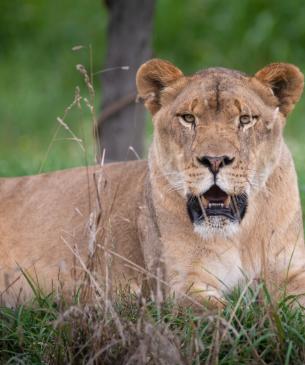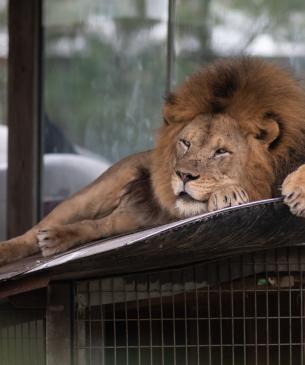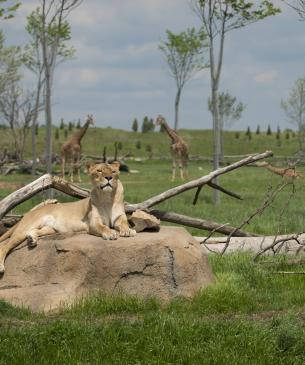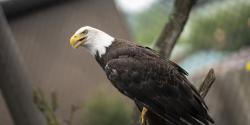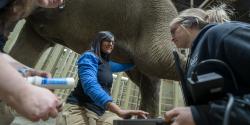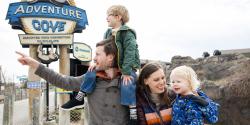Lions are the second largest of the cat species and the only cats with manes.
The male's mane begins to develop as short fringe around the head and face at about nine to twelve months of age and is not fully developed until five or six years of age.
Scientific Name: Panthera leo
Conservation Status: Vulnerable
Size: 5.5 to 7 ft. in body length, with tail length from 2 to 3 ft.
Weight: Males range from 330 to 500 lbs.; females from 265 to 350 lbs.
Median Life Expectancy: 16.9 years



